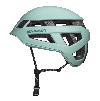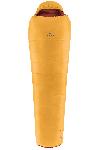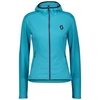Torres del Paine, interview with Nicolas Favresse after the first free ascent of El Regalo de Mwono in Patagonia
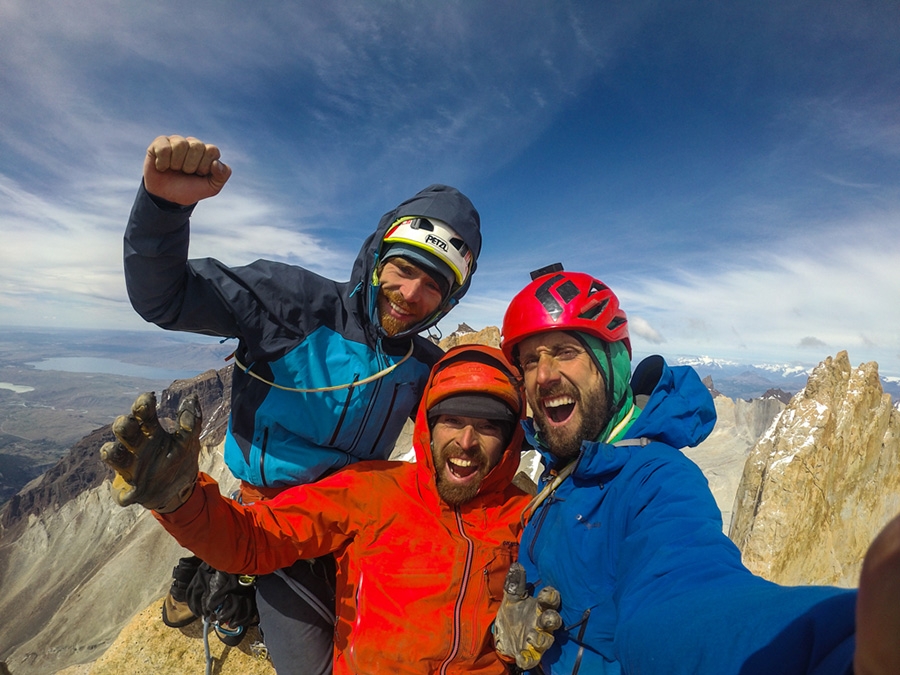
 1 / 9
1 / 9 archive Favresse
archive Favresse
As reported at the end of February, Belgian climbers Nicolas Favresse, Sean Villanueva O’Driscoll and Siebe Vanhee succeeded in making the first free ascent of El Regalo de Mwono on the East Face of the Central Tower of Paine in Chile’s Patagonia. This 1200m line was first ascended between 1991/1992 by the Brits Paul Pritchard, Simon Yates, Sean Smith and Noel Craine with difficulties up to VI, 5.10, A4, and now the route goes free at 8a. technical difficulties aside, this ascent was certainly the most intense experience the three have endured in Patagonia so far. 19 days on the wall, with just one remaining pitch needing freeing but down on food supplies and no chance of descending through the storms, as Favresse recounts in this in-depth interview.
How long did you have this route in mind?
When we climbed the South African route in 2009 I was struck by this line. It’s mainly just one thin crack system that runs straight up from the bottom to the top of the Central Tower. It’s thin, but so obvious. So I thought: "Wow, if that goes free it would be so amazing!... And if it doesn’t, for sure it looks like there are some really cool pitches to free climb on it." So the initial thought was that it would be impossible to free this line, but if there was a small chance, it would certainly be worth double checking ;-) We were mentally ready to "fail" at free climbing it and that opened our mind for anything to happen.
You and Sean are a tried-and-tested team. Tell us about Siebe…
At 25, Siebe is a young Belgian climbing talent. He is very motivated for anything that’s climbable and he is a very strong climber all around. He also has a similar climbing background as Sean and I do, coming from hard sport climbing and gym climbing and transferring these skills to more adventurous types of climbing. The last few years in parallel with his studies he completed a few successful expeditions to Greenland, Venezuela, Madagascar and Siberia where he gained a lot of experience. Now that he is done with his studies, he seems ready to push his climbing to the next level. For Sean and myself, it was a really nice thing to have Siebe and his fresh energy come along. It worked out great! But he badly needs to learn how to play an instrument!
What were you guys ready for, and what not?
I guess to the possibility that the free climbing would be too hard for us or even impossible. And off course we knew we would get pounded by bad weather… But we didn’t expect it to be that bad! I wasn’t ready to spend 19 days on the wall… In fact I had a flight scheduled to come back to Europe on the 17th of February - unfortunately I was still on the wall while my flight took off! There was no way I could get down the wall in such stormy weather and at the same time we were so close to freeing the route completely that it was worth being patient and missing my flight.
So how did things develop?
Over 4 days of climbing we fixed the lower slabs to a ledge about 400m from the ground and in between we walked back and forth transporting all our gear from the entrance of the park up to the base of the wall. That took a total of about 10 days. During those days on the lower slabs the weather was very cold, the rock was snowy and wet and often we got caught in snow storms, so our progress was slow right from the start… it never changed. We climbed in 4 days what we could have done in one had conditions been ideal. After that we waited a few days before the weather allowed us to get on the wall. We fixed the following 10 pitches in the next 2 days but we failed to onsight 5 of them. We freed 2 of the 5 pitches and after that we decided to move our camp as close as possible to the heart of the difficulties in order to take better advantage of the short weather windows and explore the possibilities to freeing them or finding variations.
How was the heart of the difficulties?
At first we thought 2 pitches were impossible to free climb but after 3-4 days working the moves with numb feet and hands we found a funky sequence that worked to free climb the A4 pitch and a beautiful bolt free 35m variation to avoid 4 meters of desperate blankness. If the weather had been good we could have just tried them over and over until we sent them, but the weather was so cold and windy and snowy that we very rarely had the opportunity to try and free them. I mean it’s one thing to free a 5.10 crack in bitter cold weather but it’s totally another when it’s hard, long, very thin and sustained and you have to feel your feet in order to smear and feel your finger tips to hold tiny crimpers. When the weather did clear up a bit, the sun broke through the clouds and the wind died down slightly, and we had to get on it quickly. At its best it gave us about 3 to 4 hours of decent conditions.
Presumably you also continued to forage upwards?
Yes, while working the hard pitches we also made progress bringing our high point slightly higher and higher until the weather allow us to make a summit push. In the end, we waited about 10 days before conditions were good enough to redpoint the last hard pitch and that was on day 19th on the wall… That was the day we had planned to go down no matter what happened.
Let’s focus quickly though on the summit push, on those 19 days in total
We summited the route on our 15th day on the wall, even if we still had that one pitch left lower down which we had not yet freed. I guess we were really lucky, because I think Patagonia gave us the best day in the last couple of months. We saw the good weather coming the evening before, when the wind suddenly died and the skies cleared. So we woke up at 4h30 am and jumared up to our highpoint. I don’t know why, but the cracks which were full of ice a couple days before were completely clean and after one long 70m pitch of steep climbing we reached lower angle mixed terrain that led us to the top of the wall. We climbed in rock shoes all the way to the summit, avoiding icy sections and using our climbing shoes sometimes to make some steps in the hard snow. The wind was still very strong on the summit ridge but every time we sheltered from the wind we managed to enjoy the warmth of the sun which was really nice! We reached the summit at around 2pm and after 5 hours of rappels we crawled into our portaledges just as the first snow flakes started to fall down from the sky. After that, for the next 3 days and a half we did not see either the ground nor the sky. We got stuck in a big storm.
You were practically without food at this point
We had to ration whatever little food we had left. We had no idea about the weather forecast so we were always hoping it would get better and that meant we didn’t ration too much at first. But when there was almost nothing left to eat and the weather was still too poor to go down, we had no other choice but to survive with what we had. The day we finally descended we had no food left.
Did you ever think you might give up?
Yes off course! That made the experience so much more powerful. Until the morning of our 19th day on the wall we thought we would give up because the weather wasn’t cooperating, giving us absolutely no chance to even give it a try. Then the wind died down and the sun radiated through the clouds. The temperature settled slightly above zero degrees and there was our last chance… Two hours of rough but decent conditions to free climb it.
What about the descent?
Right after we freed the last aid pitch, we packed our ledges and at the same time it started snowing heavily. But we had just succeeded in freeing the line and felt somehow invincible so we went down anyway. Luckily the weather wasn’t as bad as it could have been but still we were cold, wet and the last raps were done in the dark. Fortunately our ropes didn’t get stuck anywhere.
Talking of which, did you leave any gear insitu?
There are a few nuts that got stuck in the cracks. That’s the only thing we left beside rapping anchors. We took down some old ropes and trash left on the route but there are still a lot of ropes left from other climbers. It’s such a pity to see this but unfortunately it seems like it’s a really common thing climbers do on big walls in remote places.
You did what is known as a team free ascent… to those who don’t understand the finer details, what does this mean?
It means that every pitch was led free by at least one of us… And in this case we shared the lead more or less equally between the three of us. Whoever was not leading followed the pitches without the use of jumars, except a few exceptions when the weather became too stormy and cold. If we had had more time, we would have all liked to try to lead every pitch but this time, with this weather conditions as they were, this was the best we could do.
What overall grade does the route get?
We estimate two pitches to be of about 8a, one of 7c, two 7b… The hardest climbing is between pitch 10 and 16.The rest is mostly in the 5.11-5.10 range but often spiced up with icy cracks and snow covered holds.
Before going you Nico managed to redpoint a 9a sport climb. Which was harder?
It’s not comparable! I guess for me this experience in Patagonia was harder in a way, since it took me much further away from my comfort zone. But technically 9a is so much harder than 8a. Here in Patagonia it’s definitely the weather that made it so mental and hard but in a totally different way. Somehow there was so much more pressure when attempting to free one of these crux pitches because we had so few opportunities to try them.
How does this compare to your other Patagonian escapades?
It was more intense, partly because the free climbing was harder and less obvious, but mainly because of the bad weather. The bad weather made it very mental because we had to react very quickly whenever there was a small weather window…
For a while you guys were in excellent company, with Mayan Smith-Gobat and Brette Harrington attempting Riders on the Storm close by…
Yes it was nice to be climbing side by side with them. And whenever there were going up on Riders it did motivate us to go up on our route, too, even in poor conditions. I think we really motivated each other.
Last question Nico: what surprised and impressed you about this climb?
The quality of the granite, the steepness of this wall. And the perfection of this line. We couldn’t have asked for more.
RELATED NEWS
23/02/2017 - Paine Towers, Nicolas Favresse, Sean Villanueva O'Driscoll and Siebe Vanhee free another big climb in Patagonia
15/03/2013 - Villanueva, Didier and Hanssens free climbs in Patagonia's Torres del Paine
12/02/2009 - Paine South African Route, interview with Favresse, Villanueva and Ditto
17/02/2006 - Belgians repeat Riders on the Storm, Patagonia
18/07/2003 - Trekking in Patagonia



 Copia link
Copia link

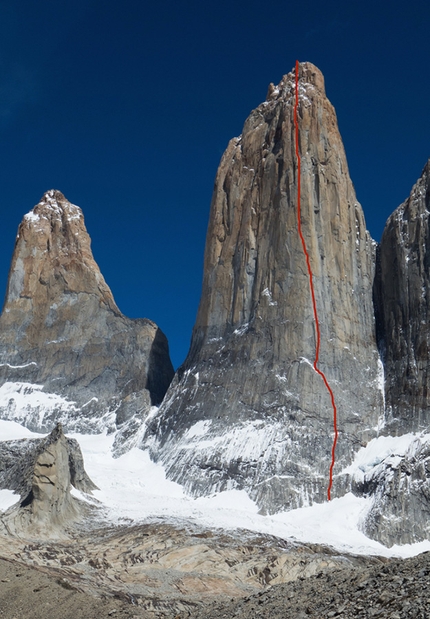
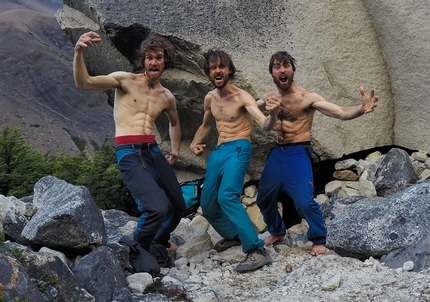
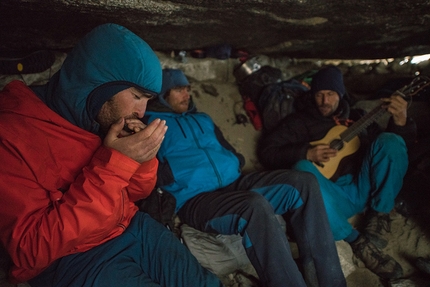
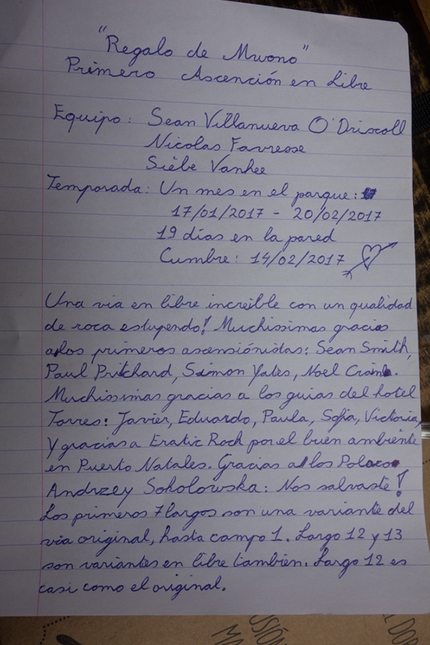
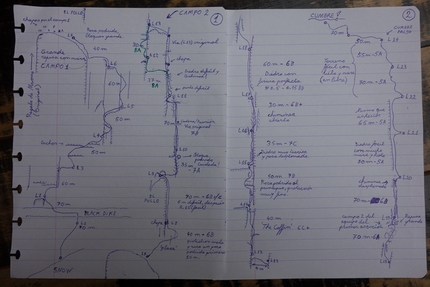
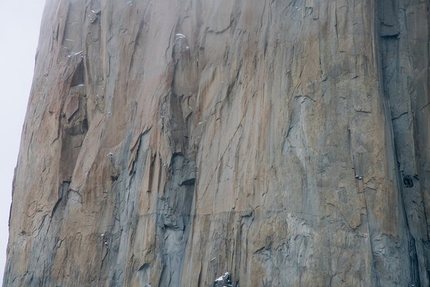
 See all photos
See all photos











